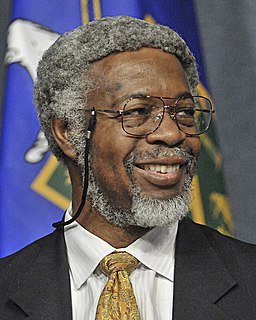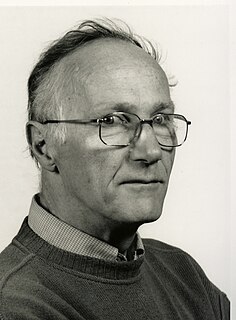The concept of supergroup is a generalization of that of group. In other words, every supergroup carries a natural group structure, but there may be more than one way to structure a given group as a supergroup. A supergroup is like a Lie group in that there is a well defined notion of smooth function defined on them. However the functions may have even and odd parts. Moreover, a supergroup has a super Lie algebra which plays a role similar to that of a Lie algebra for Lie groups in that they determine most of the representation theory and which is the starting point for classification.
Superspace is the coordinate space of a theory exhibiting supersymmetry. In such a formulation, along with ordinary space dimensions x, y, z, ..., there are also "anticommuting" dimensions whose coordinates are labeled in Grassmann numbers rather than real numbers. The ordinary space dimensions correspond to bosonic degrees of freedom, the anticommuting dimensions to fermionic degrees of freedom.

In theoretical physics, supergravity is a modern field theory that combines the principles of supersymmetry and general relativity; this is in contrast to non-gravitational supersymmetric theories such as the Minimal Supersymmetric Standard Model. Supergravity is the gauge theory of local supersymmetry. Since the supersymmetry (SUSY) generators form together with the Poincaré algebra a superalgebra, called the super-Poincaré algebra, supersymmetry as a gauge theory makes gravity arise in a natural way.
In theoretical physics, a supermultiplet is a representation of a supersymmetry algebra.
In physics and mathematics, supermanifolds are generalizations of the manifold concept based on ideas coming from supersymmetry. Several definitions are in use, some of which are described below.
In theoretical physics, extended supersymmetry is supersymmetry whose infinitesimal generators carry not only a spinor index , but also an additional index where is integer.
In theoretical physics, one often analyzes theories with supersymmetry in which F-terms play an important role. In four dimensions, the minimal N=1 supersymmetry may be written using a superspace. This superspace involves four extra fermionic coordinates , transforming as a two-component spinor and its conjugate.
In theoretical physics, one often analyzes theories with supersymmetry in which D-terms play an important role. In four dimensions, the minimal N=1 supersymmetry may be written using a superspace. This superspace involves four extra fermionic coordinates , transforming as a two-component spinor and its conjugate.
In theoretical physics, there are many theories with supersymmetry (SUSY) which also have internal gauge symmetries. Supersymmetric gauge theory generalizes this notion.

Sylvester James Gates Jr., known as S. James Gates Jr. or Jim Gates, is an American theoretical physicist who works on supersymmetry, supergravity, and superstring theory. He currently holds the Clark Leadership Chair in Science with the physics department at the University of Maryland College of Computer, Mathematical, and Natural Sciences. He is also affiliated with the University Maryland's School of Public Policy. He served on former President Barack Obama's Council of Advisors on Science and Technology.
Martin Roček is a professor of theoretical physics at the State University of New York at Stony Brook and a member of the C. N. Yang Institute for Theoretical Physics. He received A.B. and Ph.D. degrees from Harvard University in 1975 and 1979. He did post-doctoral research at the University of Cambridge and Caltech before becoming a professor at Stony Brook University.
In theoretical physics, the Konishi anomaly is the violation of the conservation of the Noether current associated with certain transformations in theories with N=1 supersymmetry. More precisely, this transformation changes the phase of a chiral superfield. It shouldn't be confused with the R-symmetry that also depends on the fermionic superspace variables. The divergence of the corresponding Noether current for the Konishi transformation is nonzero but can be exactly expressed using the superpotential.

Ulf Lindström is a Swedish theoretical physicist working in the fields of string theory, supersymmetry, and general relativity.

"An Exceptionally Simple Theory of Everything" is a physics preprint proposing a basis for a unified field theory, often referred to as "E8 Theory", which attempts to describe all known fundamental interactions in physics and to stand as a possible theory of everything. The paper was posted to the physics arXiv by Antony Garrett Lisi on November 6, 2007, and was not submitted to a peer-reviewed scientific journal. The title is a pun on the algebra used, the Lie algebra of the largest "simple", "exceptional" Lie group, E8. The paper's goal is to describe how the combined structure and dynamics of all gravitational and Standard Model particle fields are part of the E8 Lie algebra.
Warren Siegel is a theoretical physicist specializing in supersymmetric quantum field theory and string theory. He is a professor at the C. N. Yang Institute for Theoretical Physics at Stony Brook University in New York.

Gian Francesco Giudice is an Italian theoretical physicist working at CERN in particle physics and cosmology.
In theoretical physics, ABJM theory is a quantum field theory studied by Ofer Aharony, Oren Bergman, Daniel Jafferis, and Juan Maldacena. It provides a holographic dual to M-theory on . The ABJM theory is also closely related to Chern–Simons theory, and it serves as a useful toy model for solving problems that arise in condensed matter physics. It is a theory defined on superspace.
Jonathan Anders Bagger is an American theoretical physicist, specializing in high energy physics and string theory. He is known for the Bagger–Lambert–Gustavsson action.

Theo Willem Jan Marie Janssen, better known as Ted Janssen, was a Dutch physicist and Full Professor of Theoretical Physics at the Radboud University Nijmegen. Together with Pim de Wolff and Aloysio Janner, he was one of the founding fathers of N-dimensional superspace approach in crystal structure analysis for the description of quasi periodic crystals and modulated structures. For this work he received the Aminoff Prize of the Royal Swedish Academy of Sciences in 1988 and the Ewald Prize of the International Union of Crystallography in 2014. These achievements were merit of his unique talent, combining a deep knowledge of physics with a rigorous mathematical approach. Their theoretical description of the structure and symmetry of incommensurate crystals using higher dimensional superspace groups also included the quasicrystals that were discovered in 1982 by Dan Schechtman, who received the Nobel Prize in Chemistry in 2011. The Swedish Academy of Sciences explicitly mentioned their work at this occasion.
In theoretical physics, more specifically in quantum field theory and supersymmetry, supersymmetric Yang–Mills, also known as super Yang–Mills and abbreviated to SYM, is a supersymmetric generalization of Yang–Mills theory, which is a gauge theory that plays an important part in the mathematical formulation of forces in particle physics.






